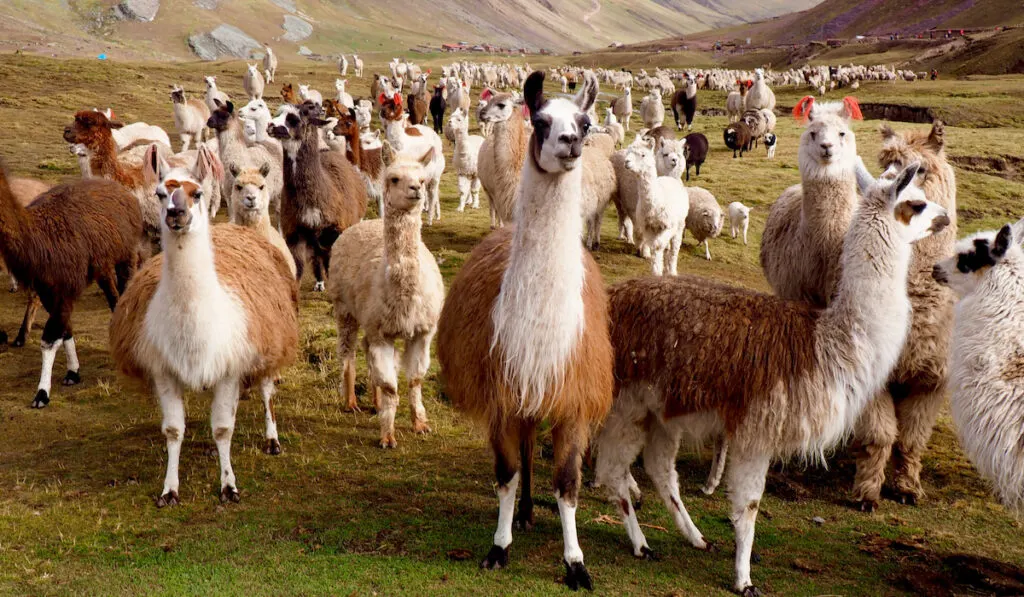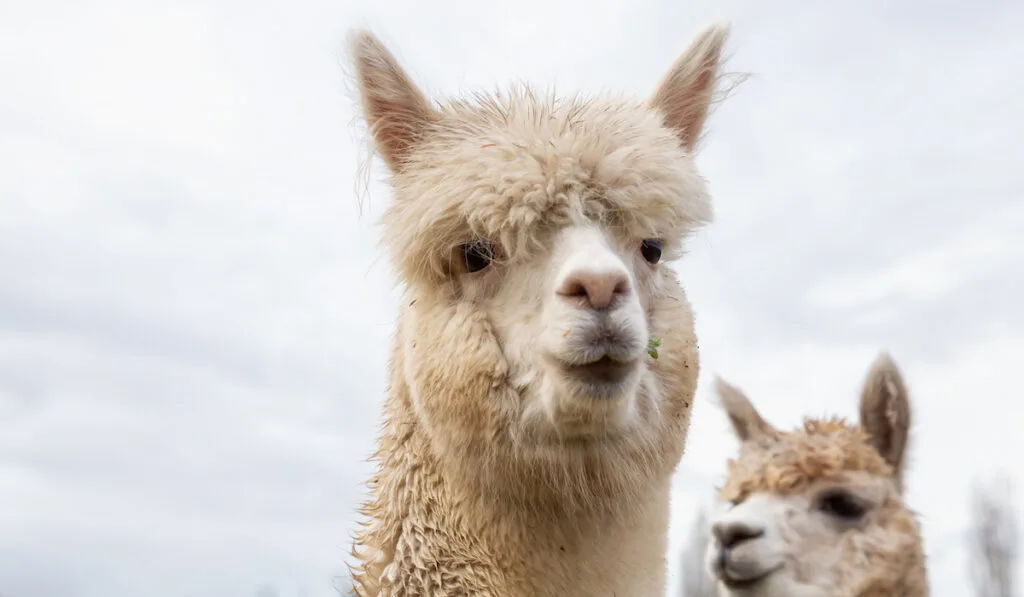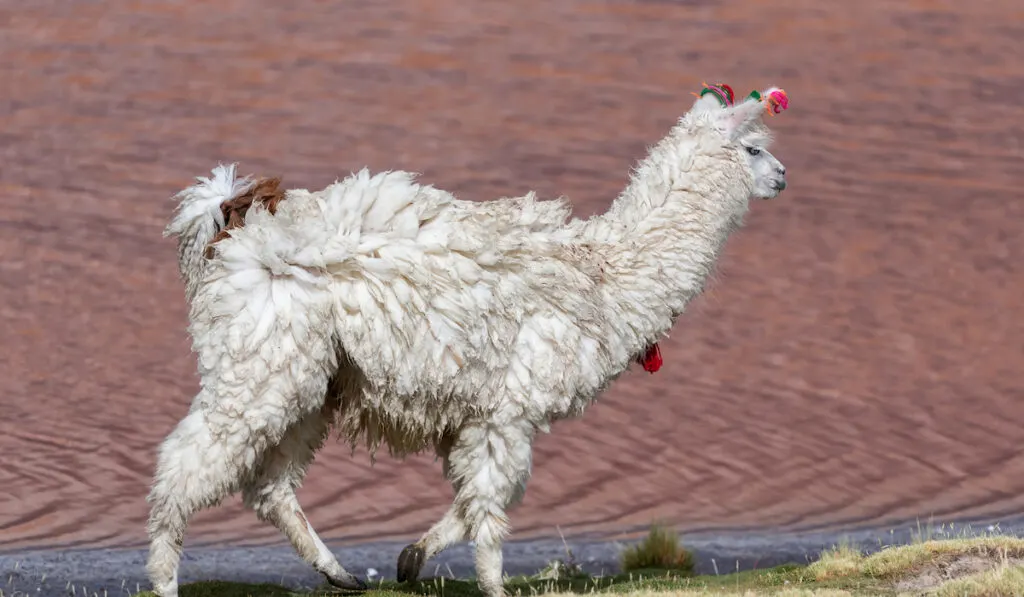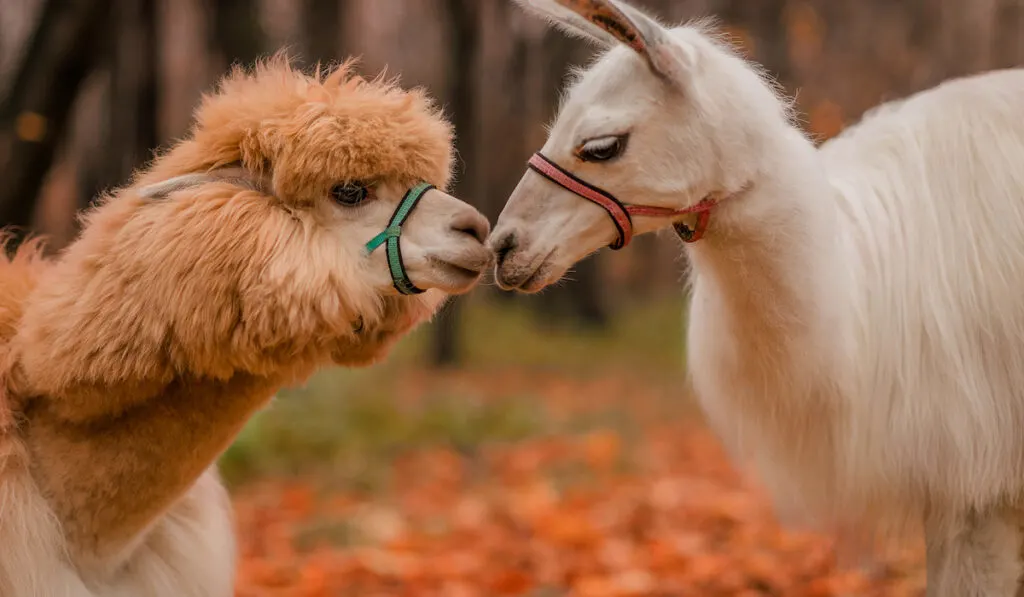You shouldn’t feel silly if you confuse a llama with an alpaca or vice versa. They certainly look somewhat similar, and most people in the U.S. don’t come across them very often. When we see their characteristic long legs and neck, as well as their furry coats, we usually think “llama”.
That’s because llamas have been made more popular in movies through the years. We’ve seen them in cartoons and those images get seared into our memories.
Another reason for the common mix-up is that llamas and alpacas can interbreed and create fertile offspring, so there’s a lot of mixing going on between species.
While llamas and alpacas share a lot of similarities, they are distinctly different animals.

Both are primarily found in Bolivia and Peru, so it’s almost like they are cousins.
The interbreeding of llamas and alpacas is a lot different than other animals. For example, horses and donkeys can breed to make mules, but the bloodline stops there because mules are infertile. Not so with alpacas and llamas.
These days, a lot of people have a growing interest in raising llamas and alpacas on their farms, ranches, or homes with large yards.
They can form strong bonds with humans, help keep predators away if you’re raising smaller animals like chickens, and they’re a great way to add something new to the pet experience.
We’ve put together a list of 11 differences and similarities to help you better understand what makes a llama a llama, and an alpaca an alpaca.
Table of Contents
Both Were Used for Transportation
One of the main similarities between llamas and alpacas is that they were traditionally used for transportation.
No, people weren’t riding them like horses, but they were fantastic as pack animals because they could handle steep climbs up and down the Andes mountain range.
Llamas are usually bigger than alpacas, so they could carry more weight, but the alpacas were generally more agile, so they could navigate more complex terrain.
Size Is a Big Difference
Alpacas are a lot smaller than llamas. While they’re young, it’s normal to have a hard time telling them apart. But once they’re full-grown, you shouldn’t mistake an alpaca for a llama ever again.
That’s because adult llamas can get up to 400 pounds while adult alpacas only reach around 150 pounds. There is a huge size difference between the animals. Alpacas stand only around 35 inches tall, while llamas get up to around 45 inches tall.
The Pointy Ears
One similarity between the two animals is that they have ears that point out of the top of their heads.
It’s certainly an interesting look that makes these animals so intriguing. Alpacas, though, usually have longer ears than llamas.

They Both Live a Long Time
Llamas and alpacas have impressive lifespans. Typically llamas will live a little bit longer, up to 25 years. An alpaca lifespan stretches anywhere from 15 to 20 years.
It’s definitely something to be aware of if you’re adopting or buying a llama or alpaca. They’re going to be around for a while.
They Cost About the Same
You’re going to be paying a price for a llama or an alpaca that depends on lineage, age, coloring, and several other factors. Usually, though, llamas and alpacas cost about the same.
Most average animal sales will range between $500 and $20,000. If you think that the $20,000 price range is high, just know that these are prized animals in a lot of places.
People have paid up to half a million dollars for alpacas in the past. They offer some of the finest fleece in the world and in some places are a way of showing wealth.
Shearing
Both animals need to be sheared regularly to keep their coats in check. Just like sheep, if left unsheared, llama and alpaca coats can grow too long and start to matt.
To avoid this, you’re going to need to shear them yourself or hire someone to come to your property to take care of it for you.
Depending on the quality of the coat, you may be able to sell it for a bit of money. Llamas need to be sheared once every other year and alpacas once yearly.

They Have Different Personalities
Alpacas are herd animals. They do best when there are several alpacas on the property with them. Alpacas get along with humans and other animals well and enjoy running with a crowd.
Llamas, on the other hand, are more territorial. They don’t do well around strange animals or humans at first and need time to warm up.
Their tendency to be territorial comes in handy, though, if you’re worried about foxes, coyotes, and other predators. Llamas are alert and their large size is a terrific deterrent.
Both Animals Are Herbivores
Alpacas and llamas are both herbivores, meaning they don’t eat any meat. Llamas and alpacas are pasture-fed animals. Most of what they eat is grass. Some owners supplement with hay and other similar foods as necessary.
Both eat the grass and then regurgitate it, and then continue to chew it as cud. This process helps them pull out all of the nutrients they need from the grass before it passes through their digestive systems.
Alpacas Have Finer Coats
Alpaca hair is much finer than llama hair. Standing and looking at them side by side, you will be able to tell the difference.
Llamas look a lot like sheep. Alpacas, though, have straighter hair that is a finer fiber used to make high-quality fleece.
The next time you see a high-quality fleece hanging on the shelf at a clothing store, take a look at the tag. Chances are, it will say it’s made from alpaca hair.

Both Animals Were Imported to the USA
You may not guess it judging by the large numbers of llamas and alpacas in the United States, but both are immigrant animals.
They are native to South America and only made their way here in the 1900s. Alpacas didn’t make their arrival until 1984, which might explain why llamas are so much more well known in the country.
Don’t let the narrative fool you, though. Alpaca farming is booming in the U.S., and now there are more alpacas than llamas.
Llamas Are Serious, Alpacas Are Fun
If you have the chance to bond with a llama, they will be extremely loyal. They’ll even become protective of you and will get anxious and possibly aggressive with other people if they get the wrong impression.
Alpacas, in contrast, are all about fun. They are playful animals and will make you laugh a lot. They’re usually much more relaxed, and they tend to be timid around new people.
